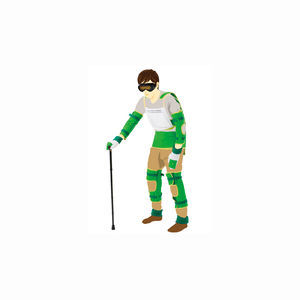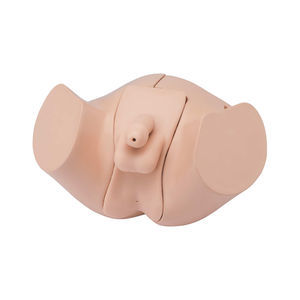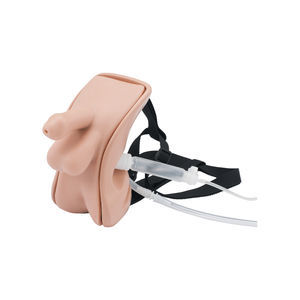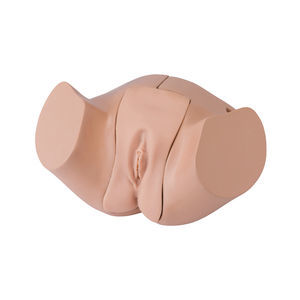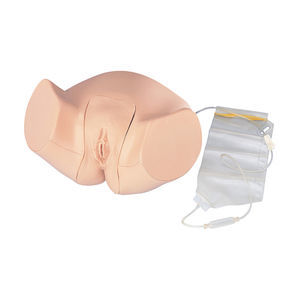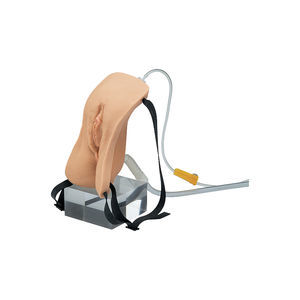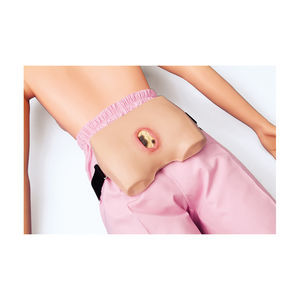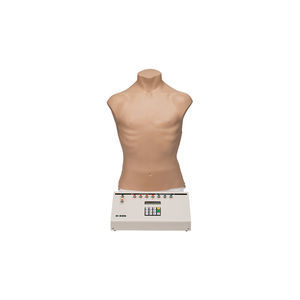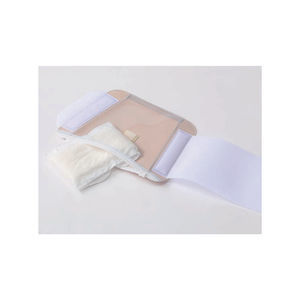
Arm anatomical model LM-074veinnursing careintramuscular injection
Add to favorites
Compare this product
Characteristics
- Area of the body
- arm, vein
- Application
- nursing care
- Procedure
- intramuscular injection, palpation, puncture, blood collection
- Length
63 cm
(24.8 in)- Width
10 cm
(3.9 in)- Height
11 cm
(4.3 in)- Weight
3 kg
(6.61 lb)
Description
Three different injection techniques-intramuscular injection, hypodermic injection, and Ⅳ injection-can be practiced with a single model. Moreover, Ⅳ injection can be practiced in the median antebrachial vein and opisthenar vein, allowing a total of four different injection techniques to be practiced.
Features
Silicone is used in the skin and other main parts, and so the look, feel, and puncture sensation are similar to those with a real human body, resulting in more realistic practice.
Since four different techniques can be practiced with a single model, it is no longer necessary to use several models as in the past and setup and cleanup/re-storage times are reduced.
With a movable shoulder, elbow, and wrist, a realstic body position for each technique can be reproduced.
The skin (silicone) can withstand many punctures without leaving visible needle holes, and so can be used for a large number of practices.
Blood can be removed with a vacuum blood collection tube or syringe.
※Recommend using a needle smaller than 21G.
Sturucture of the blood vessel
The median antebrachial vein
① Silicone gel part
The mock blood vessel is enclosed in silicone gel. This structure makes it possible to simulate the feeling that the blood vessel has slipped away or been punctured when a needle is inserted.
② Mock blood vessel
The mock blood vessel makes visual examination and palpation of the blood vessel easier than the blood vessel in the silicone gel part
Securing a needle
The skin provides a better adhesive surface for tape than previous skins, making it possibly to fix the needle securely in place.
(The skin is made of silicone rubber.)
Practical Training
Hypodermic injection
Catalogs
No catalogs are available for this product.
See all of KOKEN ‘s catalogsRelated Searches
- Anatomy model
- Demonstration anatomical model
- Teaching anatomy model
- Surgical anatomical model
- Intracranial anatomical model
- Transparent anatomical model
- Whole body anatomical model
- Digestive system model
- Silicone anatomy model
- Circulatory system model
- Arm anatomical model
- Respiratory tract anatomical model
- Urinary system model
- Female anatomy model
- Resin anatomical model
- Skin anatomy model
- Stomach anatomy model
- Vein model
- Blood vessel model
- Lung model
*Prices are pre-tax. They exclude delivery charges and customs duties and do not include additional charges for installation or activation options. Prices are indicative only and may vary by country, with changes to the cost of raw materials and exchange rates.







